Passengers with reduced mobility can benefit from Internet protocol-based communication services
- Like
- Digg
- Del
- Tumblr
- VKontakte
- Buffer
- Love This
- Odnoklassniki
- Meneame
- Blogger
- Amazon
- Yahoo Mail
- Gmail
- AOL
- Newsvine
- HackerNews
- Evernote
- MySpace
- Mail.ru
- Viadeo
- Line
- Comments
- Yummly
- SMS
- Viber
- Telegram
- Subscribe
- Skype
- Facebook Messenger
- Kakao
- LiveJournal
- Yammer
- Edgar
- Fintel
- Mix
- Instapaper
- Copy Link
Posted: 30 November 2016 | Lars Schnieder & Anna-Maria Ademeit, German Aerospace Center’s Institute of Transportation System | No comments yet
Public transportation and reliable mobility is of utmost importance in our society – both in urban and rural areas. During planning and the realisation of public transportation services every user group and their specific requirements must be carefully considered. Public transport operators are committed to ensuring a barrier-free public transportation service. Due to the high complexity of public transportation systems and legacy systems this barrier-freeness is still not fully realised. In this article Lars Schnieder and Anna-Maria Ademeit from the German Aerospace Center’s Institute of Transportation Systems, outline an individual travel assistance application based on Internet protoco-based communication services, which are available for all passengers on their smartphones.
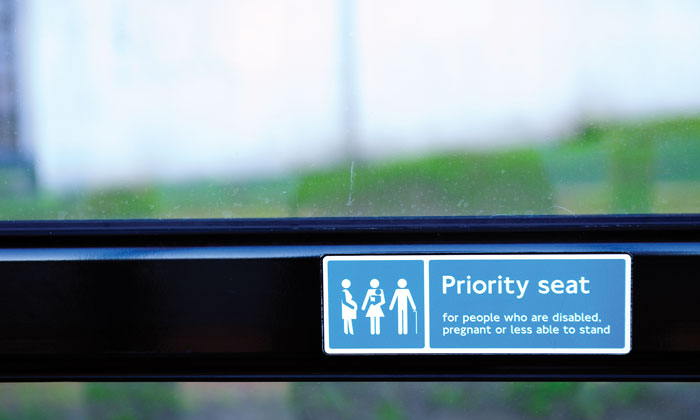

People wish to be independently mobile. Local public transport plays an important role in enabling everyone to fulfil individual demands for mobility. Mobility is a prerequisite for social inclusion – both in urban and rural areas – and barrier-free access to public transport is of great importance, especially for people with disabilities, as well as those with reduced mobility. Around the world there are over one billion people with disabilities. In Germany alone the figure is approximately 9.6 million, which is roughly one in eight of the overall population.
Seamless accessibility to the transport system, however, calls for more than just structural works and low-floor vehicles; it also requires information and communications technology (ICT) so that public transport can be used by all mobility-impaired persons without great difficulty and largely without the help of others. The project ‘aim4it’ (Accessible and Inclusive Mobility for all with Individual Travel assistance) is an example of a comprehensive information and communication system designed to reduce existing barriers in public transport.
aim4it system architecture
The aim4it project integrates into the existing information and communication technology (ICT) that is currently used by public transport operators. The aim4it system architecture consists of a background system, a smartphone application as well as a driver interface. Figure 1 shows an overview of the aim4it system architecture.
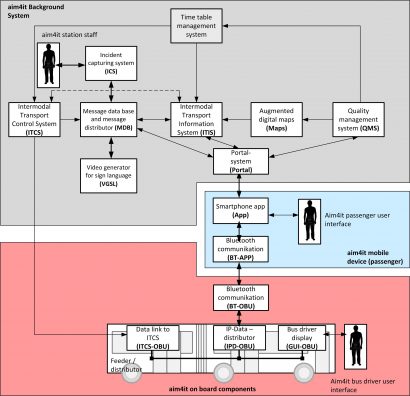

Figure 1: Overview of aim4it system architecture
The Intermodal Transport Information System (ITIS) provides travel information services for passengers. With the use of mobile devices passengers connect to the ITIS using standardised Internet protocol-based communication TRIAS (Travellers Real-time Information and Advisory Standard). The TRIAS interface consists of a modular set of services where each service has a well described interface. These services can be utilised either directly by the passengers’ mobile clients or by immediate systems, which could provide additional services for its users1. With the ITIS passengers can plan their trip and receive further information while they are on their trip (such as available updates about their scheduled travel, as well as necessary connections in between).
There is no direct connection between the passengers’ mobile devices and the ITIS. A dedicated gateway (portal system) is introduced to abstract from the specific mobile device used by the passenger. This layer of abstraction is required because there are many limitations for mobile devices with respect to energy consumption, connectivity and also the abilities of the operating system. The portal system can handle all such limitations; for example, the gateway can use different ‘pushservices’ for the different smartphone operating systems1.
The Intermodal Transport Control System (ITCS) transmits information about the current operational status of the public transport system to the ITIS. The ITCS has a bi-directional data-link to the vehicles (professional mobile radio or a public land mobile network) and receives all vehicles’ current positions. Furthermore, the ITCS supports decision making by the operator (see Figure 2) and broadcasts information to the vehicles. In the aim4it project vehicles receive requests for prolonged waiting times at interchange stations for connection protection as well as requests for staff assistance at specific stations.


Figure 2: The operations control centre of Wiener Linien
By means of the Incident Capturing System (ICS) passengers can be informed about existing irregularities in provision of public transport operations. The public transport operator can enter information about the nature of possible disruptions and/or modifications of public transport services. These messages can also be used in the ITIS for an automatic calculation of the route updates that passengers receive with a push-update. With this information to hand, passengers can decide whether to wait or take an alternative route. ICS supports collection, management, and publishing of passenger information related to service irregularities in any form or medium2. This digital content can take the form of text, announcements or video files with messages being displayed in sign language using an avatar.
Use-cases supported by the aim4it system
(Re-)Routing
In order for a travel assistance application to effectively serve as a ‘guardian angel’ guiding the passenger from start to destination, the planning and execution of routes must be considered in detail. Initial planning of a route from start (street address or point of interest) to a destination is at least as important as calculating updates of routes once a previously defined route becomes impracticable (re routing). Different events during a trip can trigger a rerouting:
- Real-time passenger information (RTPI) reveals delays in the public transport network. Once a route is affected by a delayed vehicle a new route will be generated and sent to the respective passenger with a push-update
- Incidents in the network (such as an accident) have an impact on the available public transport service and require passengers to take an alternative route
- The passenger is not at the right location at the right time and misses the bus.
- The passenger actively changes their plans and asks for an alternative route. This can be a change or a cancellation of an existing route. In cases where the passenger has ‘booked’ additional service features with his initial route, re-routing will have an impact on other use-cases supported by the aim4it travel assistance application e.g. ‘Request for staff assistance’ and ‘connection protection’. Input parameters for these use-cases will be updated or requests will be cancelled.
Request for connection protection
Only some of the wide range of possible trips in a public transportation network are realised by direct connections. Most often interchanges are required. To provide a dependable service for passengers, transport operators directly monitor connections and, if needed, the connecting vehicle can wait for passengers of the feeding vehicle. With aim4it the connection protection request takes into account that passengers with reduced mobility or sensual restrictions need a longer transfer time between the vehicles. Based on this service the connection will be guaranteed and the passenger will be informed in time. The driver of the receiving vehicle will be informed about the prolonged waiting time at the demanded station. In addition, connections can be cancelled if no longer required (such as due to re-routing) in order to avoid delays.
Incident information (in sign language)
All passengers need to get access to detailed and reliable information regarding their trip. To provide such comprehensive information by the travel assistance application for sensory restricted passengers, this information has to be provided in an appropriate way. Barrier-free information includes the media that supplies the information for the passenger. The aim4it project pays special attention to the demands of deaf and hearing impaired passengers. This passenger group experiences difficulties in deciphering complex linguistic structures. Therefore, the relevant information will be provided by sign language based avatar videos4.
Request staff assistance
Staff assistance (for example by the driver) provides an easier usage of public transportation for passengers with reduced mobility or sensual restrictions. For trip assistance services the passenger must make a reservation by the aim4it travel assistance application. This has to be carried out prior to the trip. Via direct communication between the ITCS and the vehicle, the request is displayed to the driver (see Figure 3). The staff member awaits the passenger with mobility or sensual restrictions at the previously defined station and helps the passenger to board the vehicle. At the designated station the staff member helps the passenger alight from the vehicle.
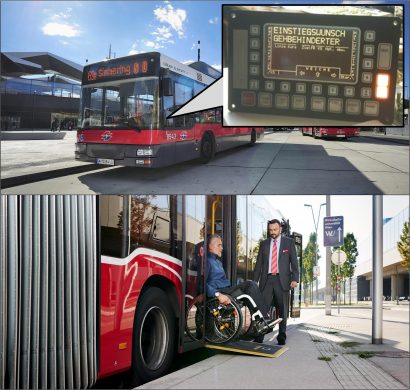

Figure 3: Bus driver display showing that a wheelchair user requires assistance at the next station
In-vehicle passenger-information
IP-based communication will be realised by introducing wireless communication between the aim4it smartphone application and the public transport vehicle by means of Bluetooth connectivity. In this way, waiting passengers can recognise which line the approaching vehicle is assigned to (see Figure 4). Furthermore, additional information is sent from the vehicle to the smartphone application in the vicinity of the vehicle as well as on-board. This contains information about the direction of travel; route and stop sequence; and real-time information to catch connected services. Also, deviations from the scheduled timetable can be sent. In addition to this, the passengers with reduced mobility or sensory restrictions can place requests for staff assistance as shown in Figure 5.
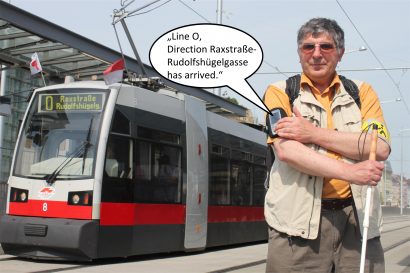

Figure 4: Recognition of which line the approaching vehicle is assigned to with direct communication between a passenger’s smartphone and the vehicle
Feedback function Public transport operators strive for continuous improvement of service quality for passenger transport. In order to achieve this passengers have to be surveyed and actual performance must be continuously monitored5. With the aim4it feedback function passengers with sensory restrictions or reduced mobility will be involved in this improvement process. Service quality can be measured with the help of direct performance measures derived from observing all transactions between the passengers’ smartphone application and the central portal system. This information is combined with data from surveys embedded into the smartphone application. After specific events along the trip the passenger will receive a questionnaire asking to rate satisfaction with a specific item. With the help of the assessed performances and opinions of the passengers the public transport operator can improve the performance level of service execution. The public transport operators can set up the right priorities for the adaptation of existing facilities and services to the requirements of passengers. In addition, gathered requirements can be taken into account for further design and planning of public transportation systems.
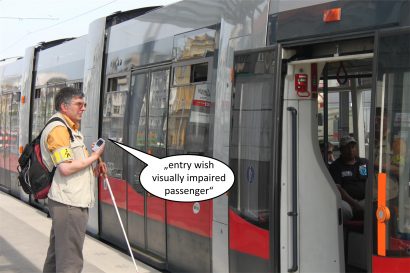

Figure 5: A passenger’s need to board a service can be directly communicated between their smartphone and the vehicle
Conclusion
The aim4it project developed a travel assistance application that allows public transport operators to make a significant step towards providing public transport services that are inclusive and accessible. Aim4it developed additional functions and services which have not been part of an initial standardisation project (IP-KOM-OEV) carried out under the initiative of the Association of German Public Transport Companies (VDV)3. The aim4it interface descriptions agreed on within the project consortium immediately resulted in work item proposals for continuous updates of the standards performed by VDV. Standardisation of the aim4it project results ensures that the aim4it travel assistance concept can be easily transferred to other regions. In February 2016 the prototypical system went into trial operations in the Austrian city of Vienna. In March 2016 the prototypical system was demonstrated during the IT-Trans trade fair in the German city of Karlsruhe.
References
- VDV-Schrift Nr. 430: Mobile Kundeninformation im ÖV – Systemarchitektur. Gesamtbearbeitung 01/2014, VDV (Verband Deutscher Verkehrsunternehmen)
- Daubertshäuser, K.; Redmann, M.; Gennaro, M.; Köhler, A.: Mehr Echtzeit für alle – Der Rhein-Main-Verkehrsverbund auf dem Weg zur verbundweiten Echtzeitinformation für Fahrgäste, Unternehmen und Aufgabenträger. In: Der Nahverkehr 7-8/2013, S. 56 ff
- Bandelin, H.; Franke, T., Kruppa, R.; Wehrmann, A.; Weißer, D.: Einheitliche Plattform für ÖPNV-Kommunikation auf gutem Weg. In: Der Nahverkehr, 7+8/2012, S. 44
- Schnieder, L.; Tschare, G.: Passenger information using a sign language avatar – Individual travel assistance for passengers with special needs in public transport. In: International Transportation 67 (2015) 1, p. 8 – 10
- EN 13816: Transportation – Logistics and Services – Public Passenger Transport – Service Quality definition, targeting and measurement. Beuth Verlag (Berlin) 2002.
Biography
Dr.-Ing. Lars Schnieder joined the German Aerospace Center (DLR) in 2011 and is currently the Head of the Intermodality and Public Transport Department within its Institute of Transportation Systems. Lars studied at the Technical University of Braunschweig (Germany) and the University of Nebraska at Omaha (USA). After graduating in 2005 he started his professional career with Siemens Industry Mobility Rail Automation. In parallel he pursued his PhD at the Technical University of Braunschweig.
Anna-Maria Ademeit joined the German Aerospace Center (DLR) in 2014 and is currently a Research Associate within its Institute of Transportation Systems where she has responsibility for the international project aim4it. Anna-Maria holds a Bachelor’s degree in Public Transport Management as well as a Master’s degree in Transport and Logistics Management from Ostfalia University of Applied Science.
Issue
Issue 6 2016
Related organisations
German Aerospace Center Institute of Transportation Systems
Related people
Anna-Maria Ademeit, Lars Schnieder








